HATOViM LATAYS
(The Best to Fly)
Slogans and Taglines
Slogans and taglines are fundamental identity content for brands — the essential, memorable words that differentiate a brand or company, and ideally serve to trigger consumer awareness and persuasion. Sometimes slogans and taglines take months of research, ideation and testing to decide. Sometimes they’re sparked in a moment of inspiration. Then, the world receives them — and hopefully they elevate public awareness of a brand or product in just a few powerful words. Entire campaigns and initiatives are created around these few words. Ideally they become part of popular culture


Two-words with ten-letters became part of the Israeli Air Force culture and prestige
Hatovim Latays “The Best to Fly" Slogan is 50 Years Old
by Moshe "Pommy" Hadar
February 24, 2010
It is customary that during a birthday celebration, a person whose birthday it is, seats in a chair and gets a “bump” up into the air and down into the floor. The number of “bumps” given equals the age of the person in years plus one “for luck”. This year we will “bump” up, into the sky, to a height of 40,000 feet, the slogan "Hatovim Latays", that was born 50 years ago.
The aviation bug afflicted me in 1947, about a year before the proclamation of the State of Israel. At that time, I worked for the General Aviation Council at 9 Montefiore Street in Tel Aviv. The Aviation Council, which was a cover-up for the Haganah's underground air force, was housed in only two rooms. The severe shortage of funds and the financial crisis did not stop for a moment.
I went into the office of Joshua Isaac, who headed the council, stoically, I told him and the staff in the room, that I was prepared to approach David Ben-Gurion and ask for his assistance in obtaining a suitable budget to assist the Aviation Council. At first, everyone in the room thought I was mocking them and joking, but as I stood up and pleaded with them to allow me to approach Ben-Gurion, they were completely convinced that they were dealing with someone who may have lost his marbles.
I did not give up. I decided to prove to those in the room that my words were truthful and that I had no problem reaching Ben-Gurion, any time. I explained to them that I live in Schderot Keren Kayemet in Tel Aviv, in one of the houses near Ben-Gurion's house, and that our families are close, especially with Paula Ben-Gurion. As further proof to the doubters in the room, I told them that when I was a child, Paula Ben-Gurion sent me to a nearby kiosk to bring siphon seltzer bottles to Ben-Gurion. The kiosk’s owner looked at me angrily and said, "Listen Moshe, go back to Paula and tell her that as long as Ben-Gurion doesn't return the empty soda siphon bottles, he won't get any new ones."
Equipped with the enthusiastic consent of the General Aviation Council, I went to David Ben-Gurion's house and told Paula, "I need to talk to Ben-Gurion for few minutes." Paula, the good, and friendly neighbor, did not hesitate, shook her head affirmatively and said: "OK, but not for long." I climbed up to Ben-Gurion's study on the second floor and explained to Ben-Gurion in few short sentences the necessity of money for the General Aviation Council. He gave me an understanding gaze and a half-smile. The negative answer didn't cross his lips. Instead, he tried to reach into his pocket to demonstrate to me that the pocket was indeed, empty. I returned to the General Aviation council disappointed.
In November 1947, the General Aviation Council became “Sherut Avir” “Air Service", with only 12 aircraft at its disposal. After a few months, at the end of March 1948, the Israeli Air Force was established with 25 light aircraft that were already in existence, about half of which were the "Auster" type, known as the famous "Primos," originally purchased by the British Mandate in Palestine, and which were assembled from a hodge-podge collection of aircrafts, refurbished and re-trained for missions at that time. The recognition of an air force and the importance of combat air power did not, yet, sink into the collective consciousness of the Israeli public. Just one day after Ben-Gurion announced the Declaration of the Establishment of the state of Israel, on Saturday morning, May 15, 1948, Egyptian "Spitfire" planes attacked Sde Dov in Tel Aviv. The assaults took place at several sorties that began in the early hours of Saturday and caused the death of five fighters as well as an extensive damage to the field. Schoolchildren were sent to Sde-Dov to fill sandbags to fortify the anti-air defense positions, which was rather tenuous. We didn't even have one fighter jet to stop the Egyptian airstrike. A frustrated fighter even fired his gun at "Spits" who dived toward the field uninterrupted.
Immediately after the attack, Ben-Gurion, fitted with a helmet, was hustled by his bodyguards into a military jeep and taken to the bombed Sede Dov airport. After the mayhem he witnessed there, suddenly the realization of a strong Israeli air force descanted upon him. The establishment of a large and powerful air force has since been at the forefront of his mission and the seeds of powerful and excellent air force have begun to sprout in his mind. He knew at the time, that few volunteered to pilot training. An effective and daunting air force could only soar if the finest youth joined the air force team and become a well and a source for additional air and ground crews. He also knew that at that time, at the initial establishment of the State of Israel, the collective public consciousness regarding aviation was very poor. A formidable campaign was needed to instill among the general population the importance of a bold and strong air force, a pillar of fire that will fly in front of the Israeli Defense Force (IDF). Additional milestones molded the recognition in the necessity of an efficient and strong air-power, in the words of David Ben-Gurion at the opening of one of the air forces bases in 1948 (statement posted on the front page of the Air Force Magazine no. 1, published in September 1948).
“Human purpose is not to rule one another, but to rule nature. You the pilots provide the possibility for humans to conquer nature. Not only in war, but also in times of peace your work is applauded. You are well appreciated for paving the pathway to the climb of Jewish virtuosity benefiting mankind." In other words, Ben-Gurion actually said, that the pilots must be the best – The Best to Fly, Ha’tovim Latays – people like them present the possibility of human victories over nature.
Gen. Dan Tolkowsky, the Air Force commander during "Operation Kadesh," (October 1956) fought and challenged the importance of the Air Force among the corps of the IDF. At the end of "Operation Kadesh", when he flew in a "Dakota" touring the Sinai peninsula, accompanied by Chief of Staff, Moshe Dayan, the latter stated to him decisively, "Dan, those are my suppositions and lessons from the war and this will be my marching orders from now forward in the IDF: First the Air Force, then the Armored Corps and then the paratroopers. The buds of "The Best to Fly” started to form tendon tissues, flesh and skin, wings and courage.
The slogan "The Best to Fly” was born 50 years ago, in – 1960, in Tel Hashomer, in the entrance to the military printing shop, where the IAF Magazine was printed, and that I was his first editor in chief. It was a hot summer day, when I was waiting outside the printing shop for my transportation back to the Air Force Headquarters.
Then it happened.
I felt that the muse was slowly invading my brain, running through the gray cells, and the slogan started to form. The contractions in my head were brief, without pain or epidural injection. At the time I generated the slogan, I wanted to wear a steel-helmet, so the muse will not escape out. Suddenly, the slogan״הטובים לטיס״ "Hatovim Latays”, glimmered in my head, glistening he burst into the world, even before the shuttle arrived.
I went back to the Air Force headquarters and presented the slogan that was received with unusual enthusiasm, and immediately scored a 10, the same as the number of letters that make up the slogan [in Hebrew].
IAF commander Ezer Weizman was immediately enthusiastic about the slogan, he adopted it at once and added: "I do not care if we will be criticized from here to eternity. People do not remember the period in which the youth did not want to enlist, and I had to trudge from school to school, from Moshav to Moshav [from collective farm to another]. Some of the upper echelon of the air force remember, how I had to persuade the communities in which they lived, to allow them to remain in the air force. People thought the everlasting peace had already come and now they only needed to build up a home and pursue education."
The enthusiasm of Ezer Weizman has reached such heights, that he has given the slogan an extended version- ״הטובים לטיס״ "The Best to Fly” and ״הטובות לטייסים״ “the Best [women] to the Pilots.” The addition plug to the slogan "The Best to Fly" aroused the anger and wrath of feminists, who saw it as an offensive sexist slogan. The extended and comical slogan caused bewilderment among women who were deeply hurt and saw in this extended slogan a degrading spectacle, demanding by any means and seeking via all the media outlets, to change the slogan to: "The Best Men to Fly” and “the Best Women to Fly” in accordance to the women’s abilities and fitness.
Many snacks were eaten on Saturday nights – in many homes in Israel, while the topic of "The Best to Fly” and “The Best [women] to the Pilots” was at issue, causing many verbal bickering, and anger that did not fade quickly.
I had experienced a heated debate about the nature of the slogan, with a senior officer of the Israeli Navy. He became angry and said gruffly: "Do you really think that only pilots are the best?" His anger grew, when I answered him with a smile, that I just invented a new slogan for the Navy.
"Let's hear"! He quickly responded curiously.
I took a step back so not to be knocked out and said to him: ״הטובעים לטיס״ “Ha’toe’vaym Latays.” [This is another of Pommy’s word play and sounds like word game. In Hebrew Tovim is Best. Toe’vaym is Drowning. So Pommy told the navy officer, “The Drowning to Fly.”]
After the initial unveiling of the slogan "The Best to Fly", it became a punching bag in the hands of the academia who claimed that these two powerful words encourage militarism, but as the time passed on, the slogan began to prove its vitality in defining the image of the Israeli Air Force. Many young people started flocking to flight school, a stream that did not exist before. The more caps were tossed into the air at pilot graduation ceremonies, so lessoned the denigration of the slogan. It eventually became a cultural asset, assimilated and recognized as a dynamic and strong asset for the Israeli Air Force. It became a tool for recruiting air and ground crews and introducing aviation into the general public consciousness.
In 1961, about a year after I invented "The Best to Fly" slogan, a fierce debate arose between the late poet and playwright Nathan Alterman and the late professor Nathan Rothenstreich, rector of the Hebrew University, who tried to challenge the legitimacy of the "The Best to Fly" slogan. Rothenstreich argued that the military and military service are important "instruments" for the existence of the state of Israel – but should not be perceived as a moral value, guiding the principle of human life.
In response, Nathan Alterman published an article in the "Da’var" newspaper (March 17, 1961) in which he sharply criticized Rothenstreich's arguments, effectively confirming the validity of the slogan. In his article, Alterman writes, among other things, "It can be surmised that the creator of this slogan could certainly have scripted instead of ”The Best to Fly”, also “The Excellent to Fly” or" “The Brave to Fly” and the likes, since “Hatovim” “The Best” was largely determined by the sound relationship between it and the word “Tayas” “Fly,” the effectiveness of a slogan is such that it uses rhyme to make it memorable and easy to retain."
"There is no doubt that ‘The Best to Fly' is one of the better slogans coined in Hebrew,” stated the advertisement man, Moshe Teumim, adding: "It is captivating, informative and creates a positive connotation. It indicates excellence and implies that if the best to fly – then whoever is flying is the best. I am not familiar with any other slogan that says something like this about people. A campaign has been tested for its success at a given time. This campaign has been brilliant for many years."
On the fiftieth anniversary of the establishment of the Israeli Air Force, a committee of 14 members, historians, senior reserve officers and military commentators selected the ten events that shaped the image of the Israeli Air Force. The committee agreed, that in fifth place out of the ten events, was the slogan "The Best to Fly" and expressed it as followed: "In 1960, the most famous slogan that affiliated with the Israeli Air Force was born. It intended to increase volunteerism for pilot training. The copyright for the slogan belongs to Moshe (Pommy) Hadar. For many years, he was the Editor in Chief of the IAF Magazine. ”The Best to Fly” has become synonymous with the Air Force over the years and has helped to establish its image in the public, as a source of quality and excellence."
Major General Eitan Ben-Eliyahu, former Air Force commander, was asked in an interview on the Fiftieth anniversary of the Israeli Air Force Day, whether the slogan “The Best to Fly” is still relevant.
"Absolutely yes," he replied, "there is room for high-quality people in other places as well, but that does not reduce the need, for those who serve in the air force to have the best quality and to receive the proper gratitude. I believe that the slogan has an appeal especially to young people. People prefer belonging to a select group. From the responses I have gotten meeting with recruits and civilians, that slogan is still viable."
During the preparations for the Six Day War, poet Amos Ettinger, telephonically, sent to the Air Force pre-war magazine his poem "On the Jet," in which he described the best to fly, who are waiting in the cockpit to take off and among others, he wrote in his poem:
“At first glance it’s a little hard to understand
At first glance, they won't believe it at all
The ones who are sitting here now beside me
Their only one dream is an immediate deployment
At this moment between a joke to a joke
Between a drenched memory bursting with moans
Their whole hearts are in the heavens now
And sit to a Mig on the tip of a tail."
In a speech given by the late Prime Minister, Yitzhak Rabin at Mount Scopus, after the IDF victory in the Six Day War, he addressed the slogan "The Best to Fly" by saying:
"We always demanded the best to serve in the IDF ranks when we said – the best to fly. And this is a phrase that has become a concept. We did not mean just the technical examination and the talent. We meant that in order for our pilots to be able to defeat all enemy forces of four Arab states in a matter of hours, they must have values of moral good, values of human good."
The slogan "The Best to Fly" has already become a household name in almost every home in Israel. The slogan has become an integral part of everyday discourse and has become a linguistic currency. New slogans based on the "the best to fly" slogan have begun to appear in the advertising market as mushrooms after the rain. From the slogan the words "The Best" were extracted and created a feeling that in all areas of our lives there are not less than the best.
A copywriter for “Seelon” (Jet) cigarettes posted the slogan "The best man to fly and best women to smoke.” Also, slogans such as "The best ones eat bananas" and "The best ones deposit money in the bank…"
After the success of the slogan "The Best to Fly", other volunteer units in the IDF also released slogans such as "After me to the Paratroopers," "Your Place with Us" – for sailor training. The singer Danny Anderson, created an album under the title, “The Best to Fly” and the slogan also spoke to the heart of Naomi Shemer [hailed as the "first lady of Israeli song and poetry"], who wrote in her poem "On the Silver Wings," "… mounted on the Silver Wings / The Knights of the Wind in the clouds/ The courageous and the Best…"
In order for the slogan "The Best to Fly", to permeate into the public collective conscious, the air force produced the largest number of films among all IDF military arms. Among the films were: "Altitude 40,000;" "The Rhythm of Tomorrow;" Six Hours in June "(full length feature film about the Six Day War in air);" Mission 20 ;" "The Great Formation;" and "Wings.”
The "Altitude 40,000" and "The Rhythm of Tomorrow" films won first prizes in the 1960s, the Golden Wing Awards at France Aerospace Film Festivals.
At the Aerospace Film Festival in Deauville, France, in 1963, I met the Russian cosmonaut Yuri Gagarin. He was the first human in history to journey into outer space and the first to travel around the globe and return safely and to become a hero in the Soviet Union and a celebrity throughout the world. At a meeting with him, I asked if it was possible to live in space, he smiled and replied: "Yes, certainly possible, but you can also die." A few years later, Yuri Gagarin was killed in a plane crash.
Only two words, “Hatovim Latays” hauled for years, countless verses, arguments, statements, and verbal disagreements. These two words penetrated into the beat of the public, spread with great zest and filled the country’s destiny as they lifted the recognition of aviation within the nation. Causing stream of the best youth to fill the ranks of the air force and ground crews.
These two words have been around for 50 years and still do not wither, becoming part of popular culture. These two words make us look up at heavens with confidence and gratitude for the best ones who guard our lives and dedicate their lives to protecting our existence and well-being.
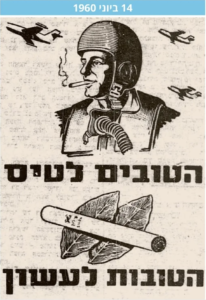
Cigarettes "Seelon" (Jet), posted the slogan: The Best Man to Fly and Best Women to Smoke
Fifty Years, 10 Events
On the fiftieth anniversary of the establishment of the Israeli Air Force, a committee of 14 members, historians, senior reserve officers and military commentators selected the ten events that shaped the image of the Israeli Air Force. The committee agreed, that in fifth place out of the ten events, was the slogan "The Best to Fly" and expressed it as followed: "In 1960, the most famous slogan that affiliated with the Israeli Air Force was born. It intended to increase volunteerism for pilot training. The copyright for the slogan belongs to Moshe (Pommy) Hadar. For many years, he was the Editor in Chief of the IAF Magazine. ”The Best to Fly” has become synonymous with the Air Force over the years and has helped to establish its image in the public, as a source of quality and excellence."
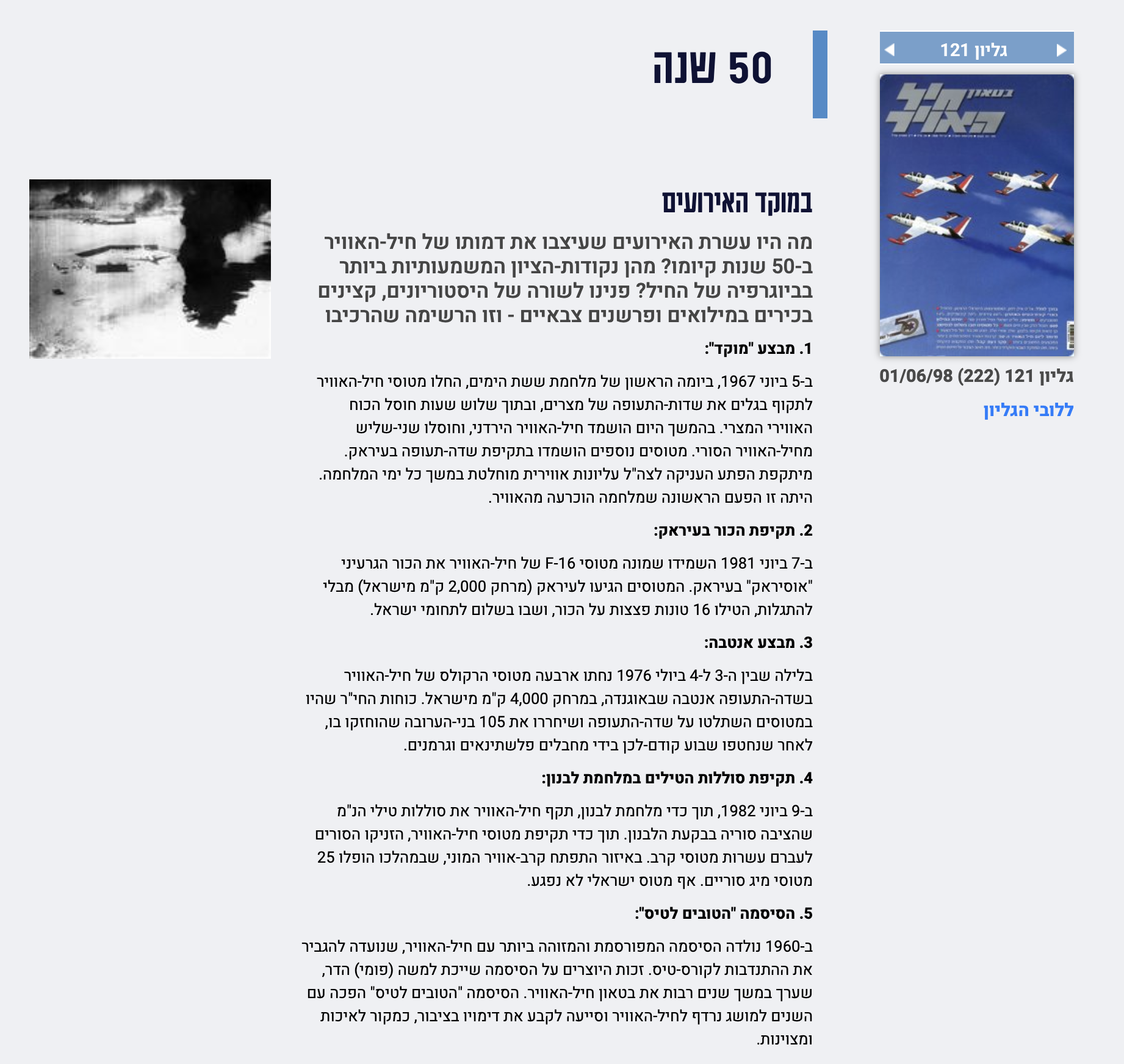
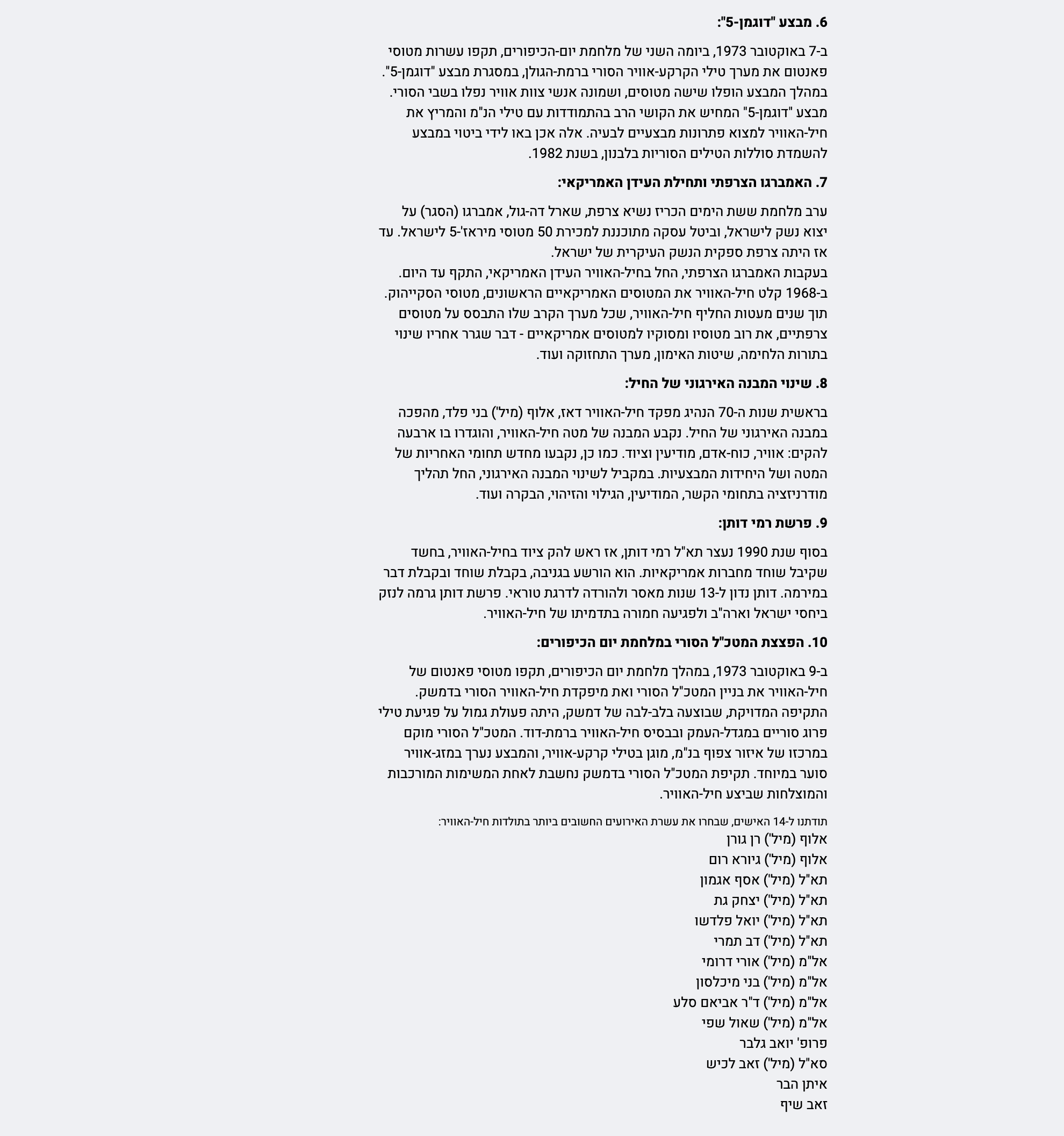
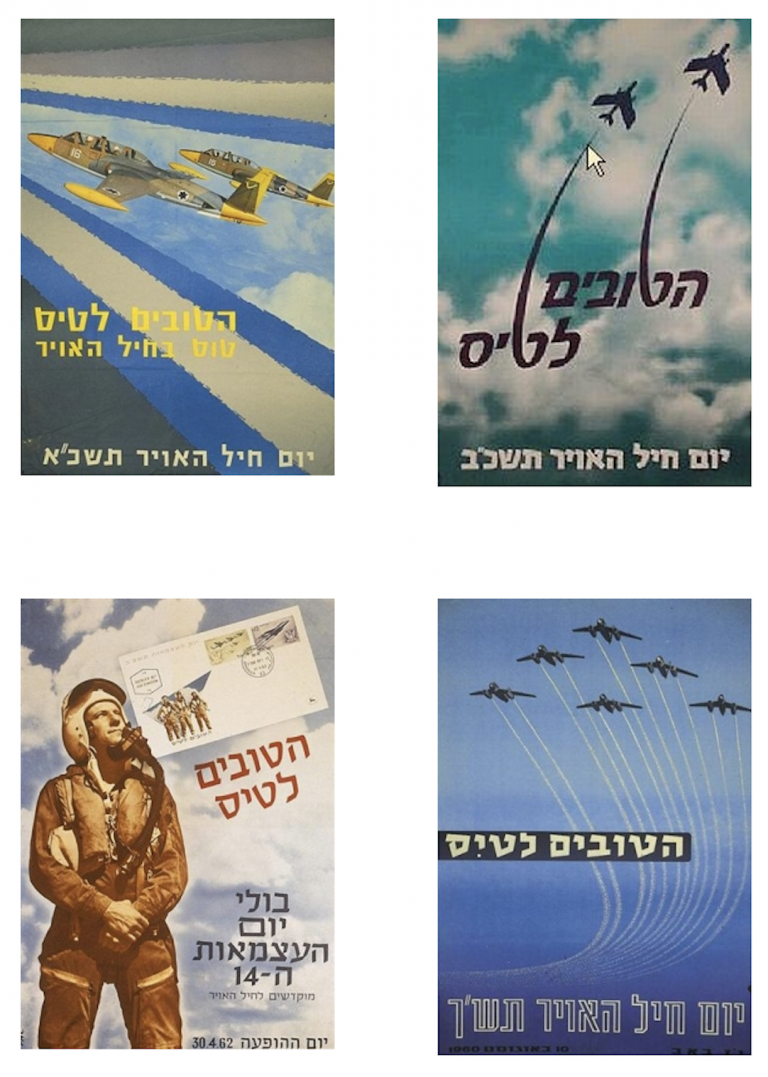
Taking credit for “inventing” the slogan “Hatovim Latays” The Best to Fly
For years, there were many who mistakenly ascribed the inventor of the slogan, "The Best to Fly," to Ezer Weizman, the former IAF commander. At times, Ezer also took the credit. For fifty years, Pommy never set the record straight (until he was asked by the IAF Magazine, in February 2010, to write the above article for the fifties anniversary of the slogan). Pommy never sought recognition as the inventor of the slogan, "The Best to Fly." He always said, "the ones who need to know, know!" Although, the issue didn't matter to Pommy, it bothered his daughter, Etti, who decided to set the record straight, by contacting reporters, newspaper editors, publishers, and even Ezer Weizman
In early 1992, Etti Hadar, Pommy's daughter, read a newspapers article, entitled "Ezer Weizman Going Home" by Etti Hasid. In the article, Ezer Weizman, claimed to have coined the slogan, "The Best to Fly." Etti Hadar sent a letter (see enclosed) to the editor of Hadashot Newspaper in Tel Aviv, and forwarded a copy to Ezer Weizman
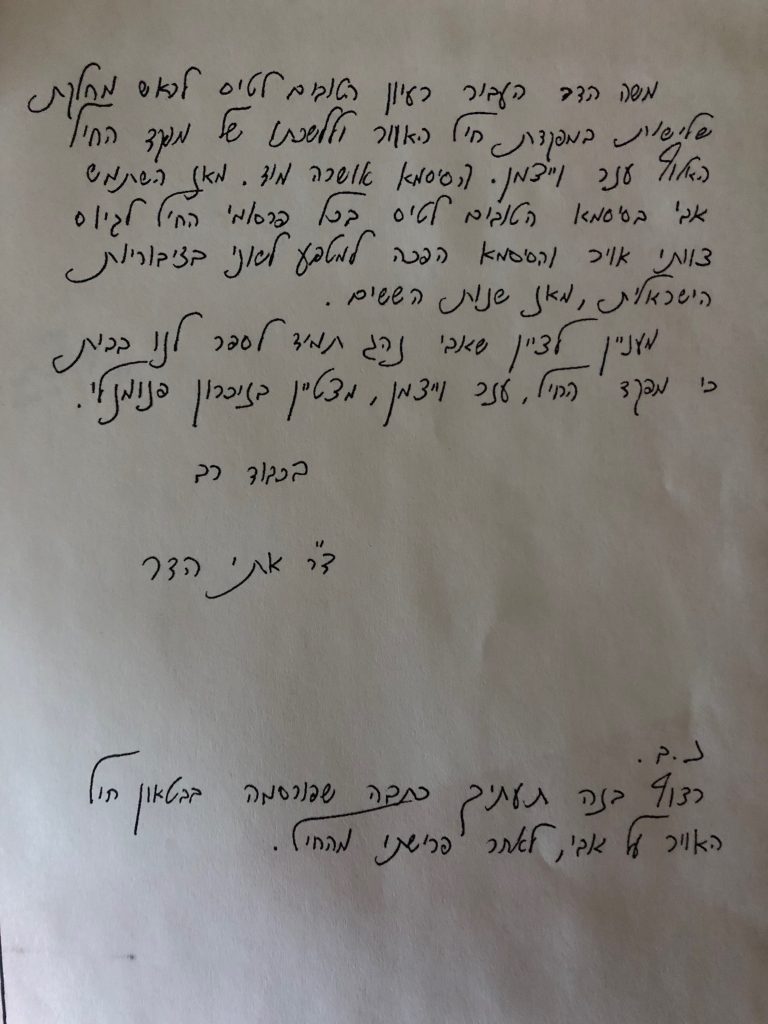
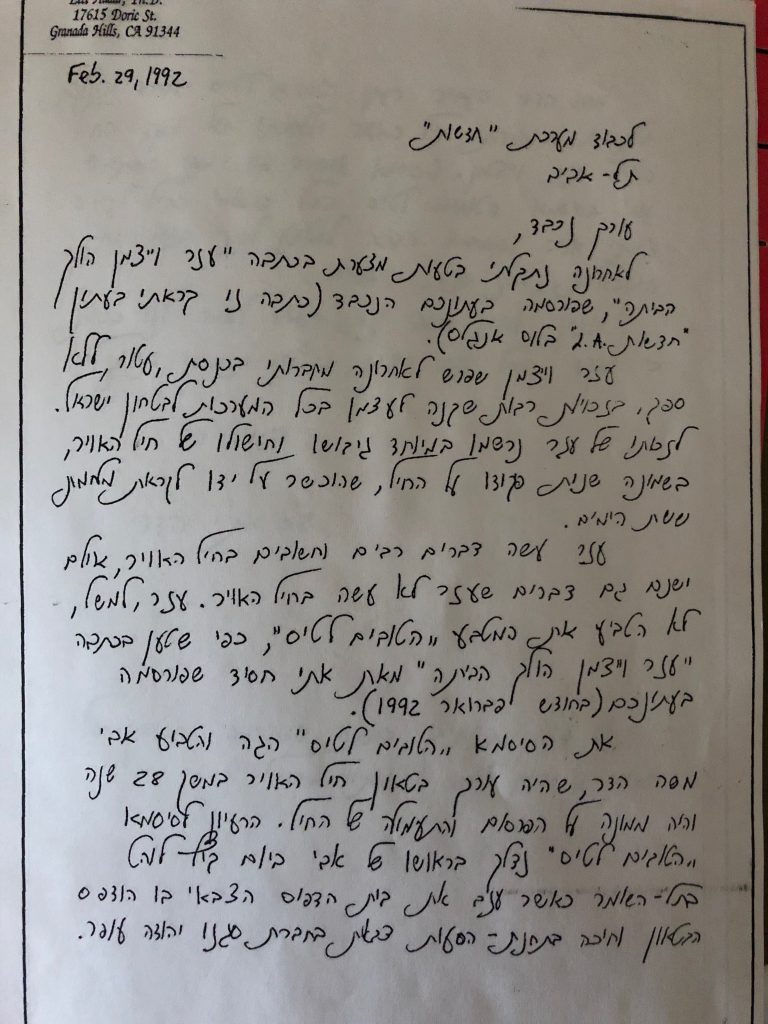
In June 1992, Etti Hadar received a direct response from Ezer Weizman. See reply letter (trans.) from Ezer Weizman, in which he was attempting to struggle with the events and yet again, misconstruing the information while adding events that never happened
Ezer Weizman
2 Hadekel
Caesarea 30600
3.6.1992
Etti Shalom,
Your father Pommy, my good friend, contributed greatly to the Israeli Air Force Magazine and to the spirit and image of the Air Force. You are right that it was he who initially coined the slogan “Tovi Ha’Noar to Fly” “The Best Youth to Fly” that was later shortened to “Hatovim Latays” “The Best to Fly.” [according to Pommy and others, this is not true…The slogan “The Best Youth to Fly” was never presented. “The Best to Fly” was the first and only slogan!]
Weizman continues:
There is no doubt that your father’s right stands firmly. But you must understand that the job of a staff officer is to suggest and the destiny of a commander is to decide.
I was glad that I had such a good and effective officer, as your father and that I accepted his recommendation. But it is also worth remembering that the criticism of the slogan, and such was, I so lovingly absorbed.
Best wishes
(signature)
Ezer Weizman
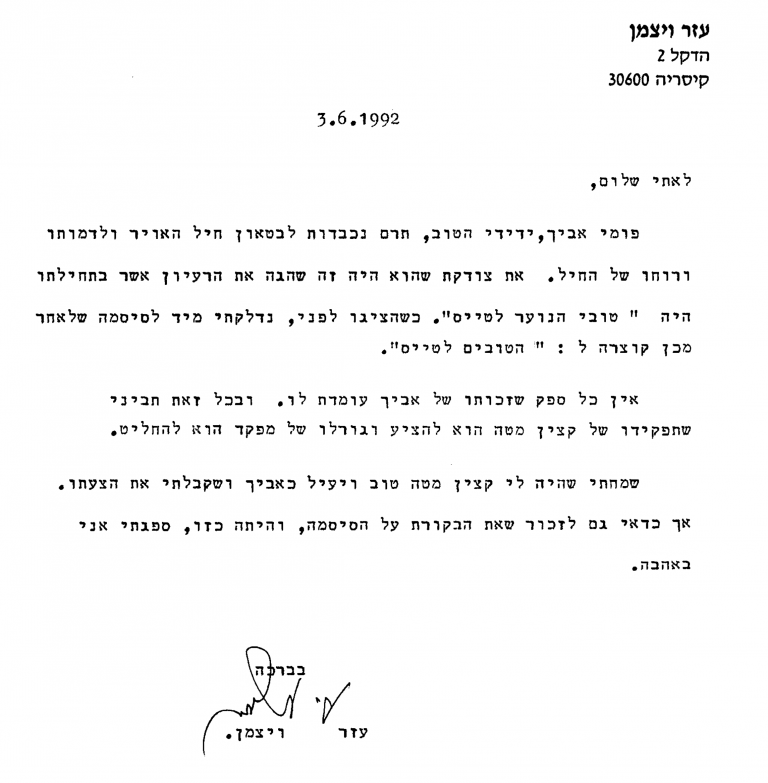
We Announce
Hatovim Latays - Moshe Pommy Hadar 1960s
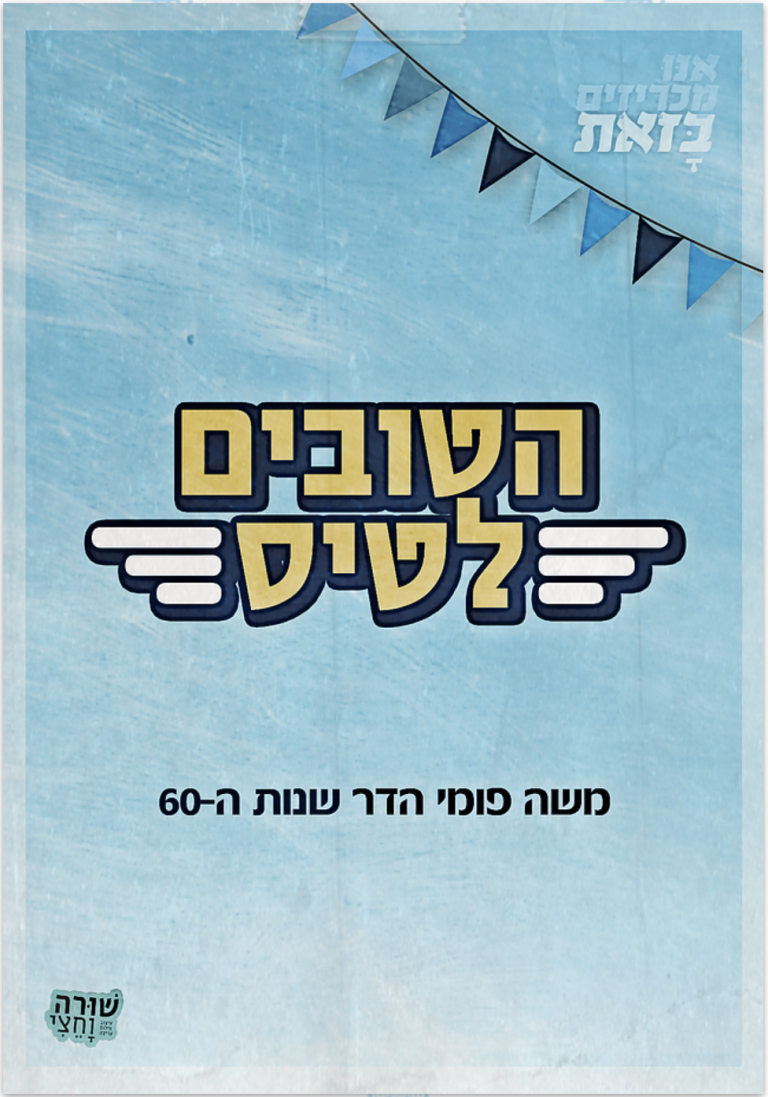
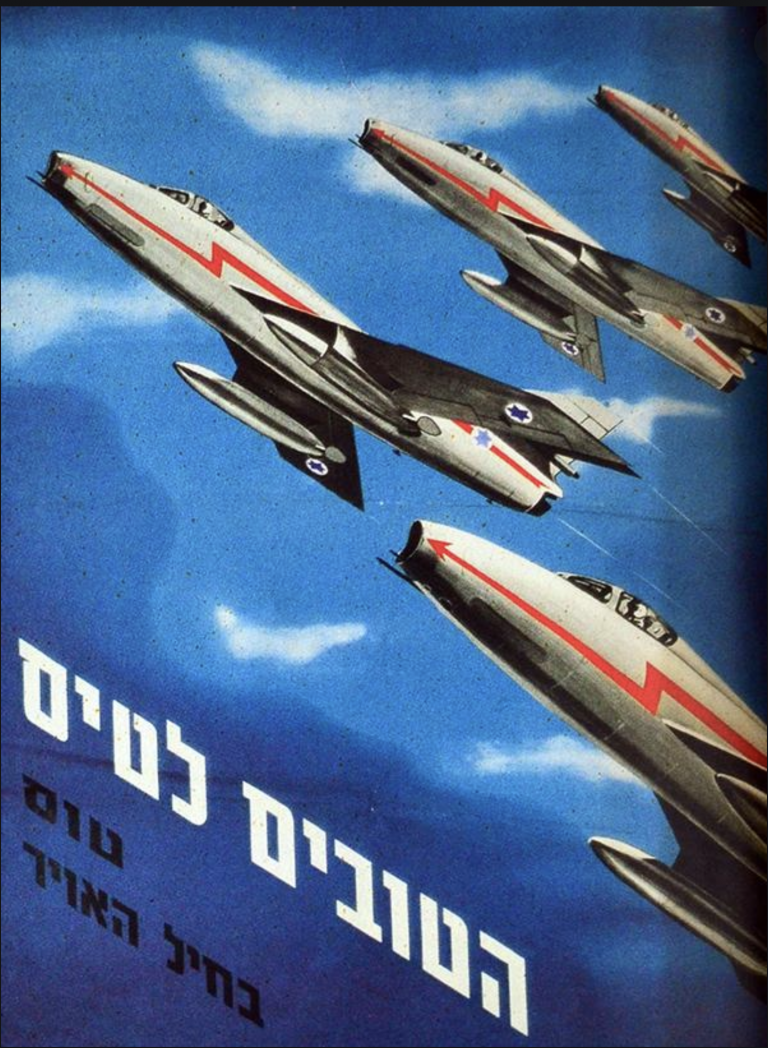
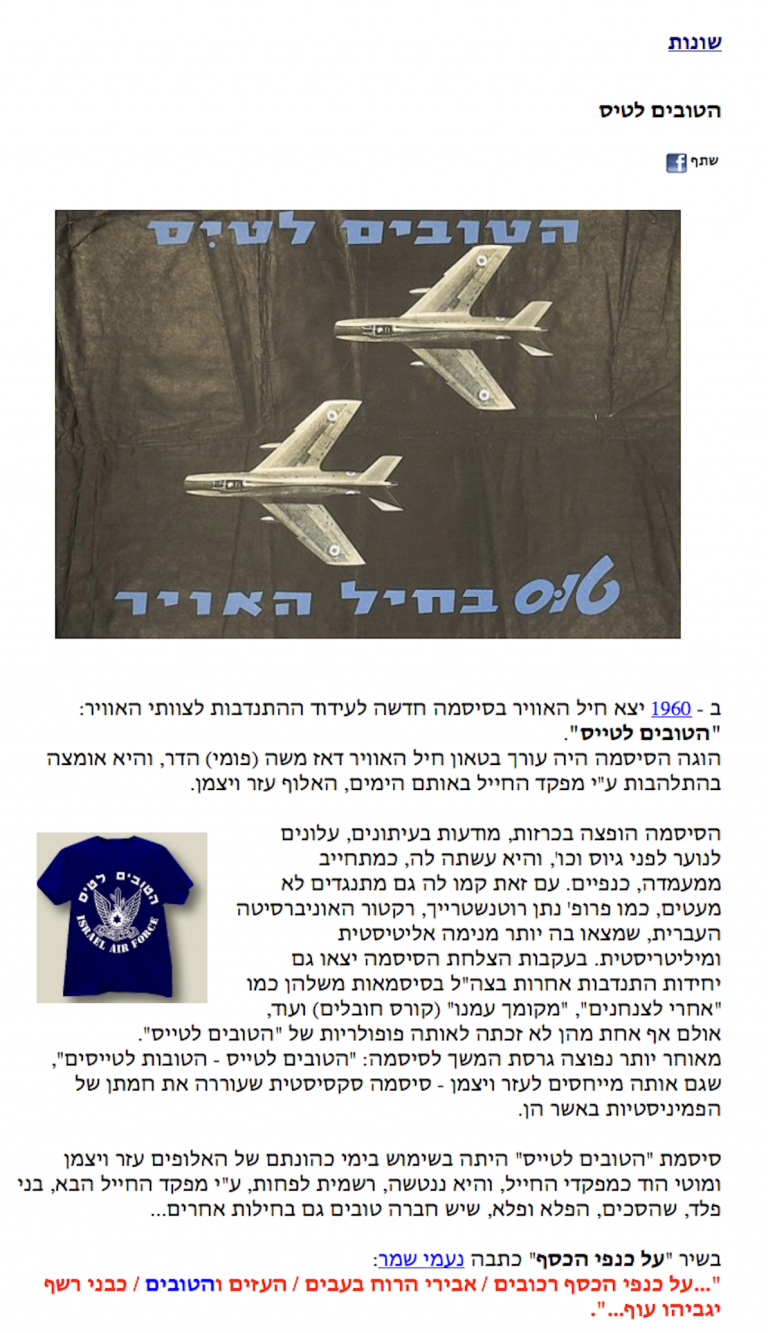


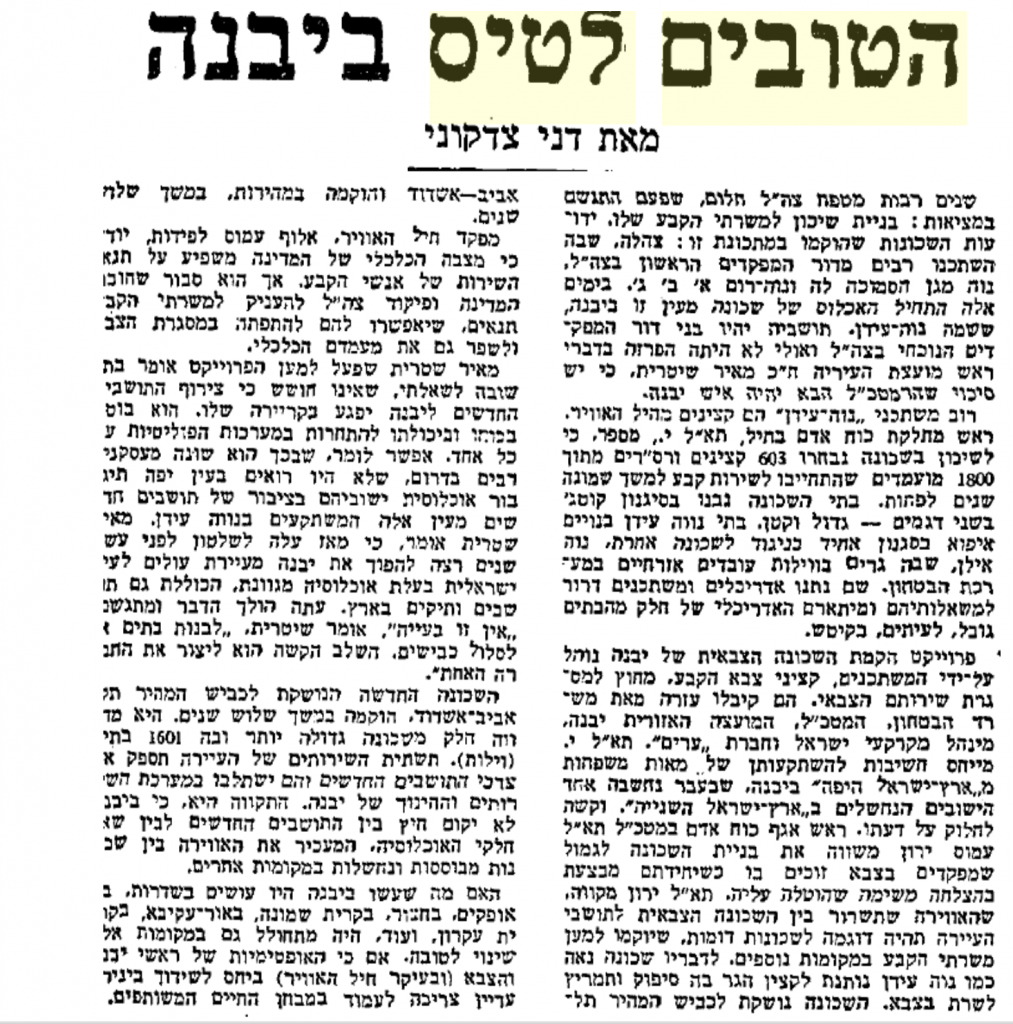
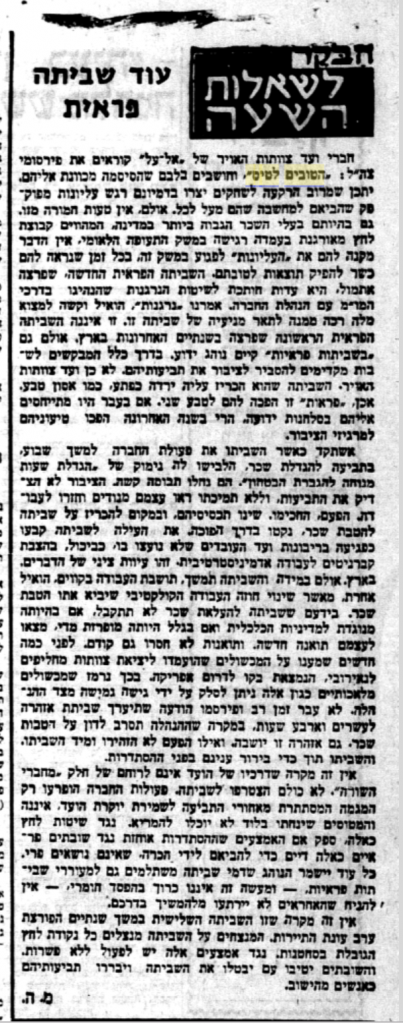

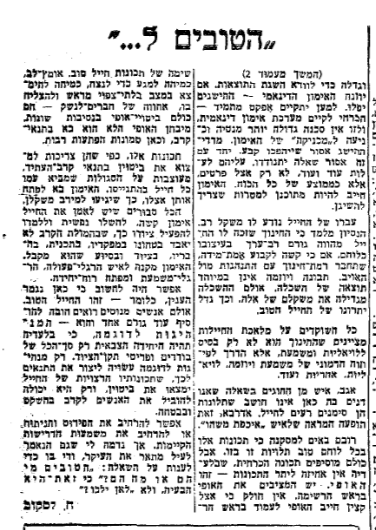

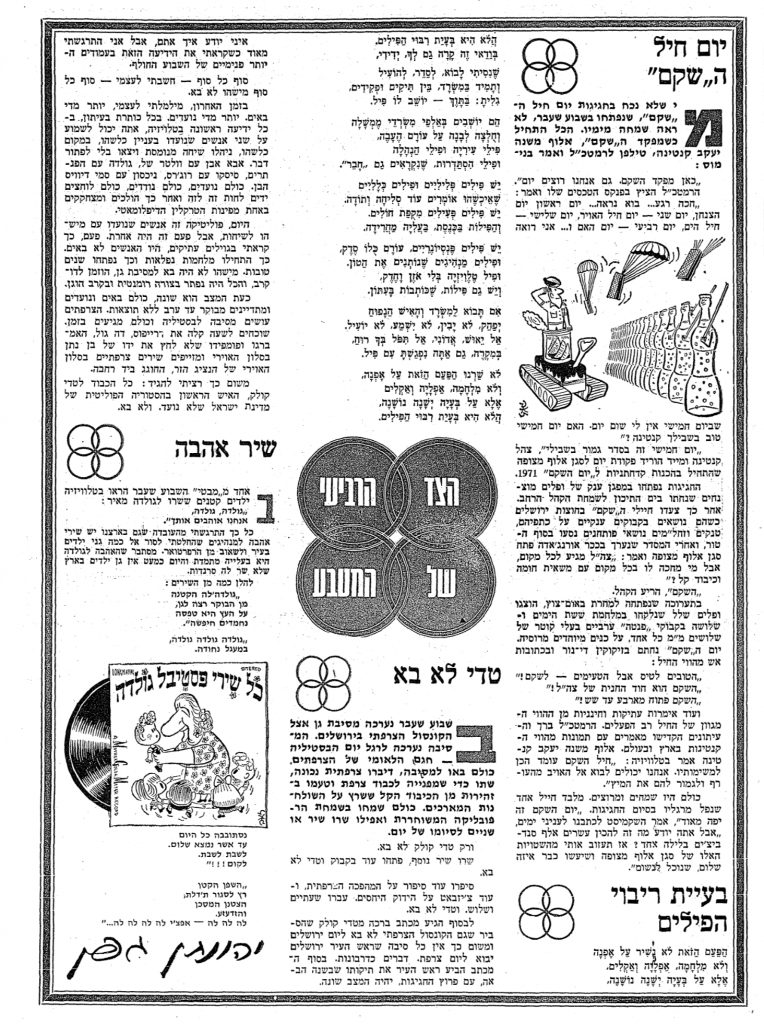
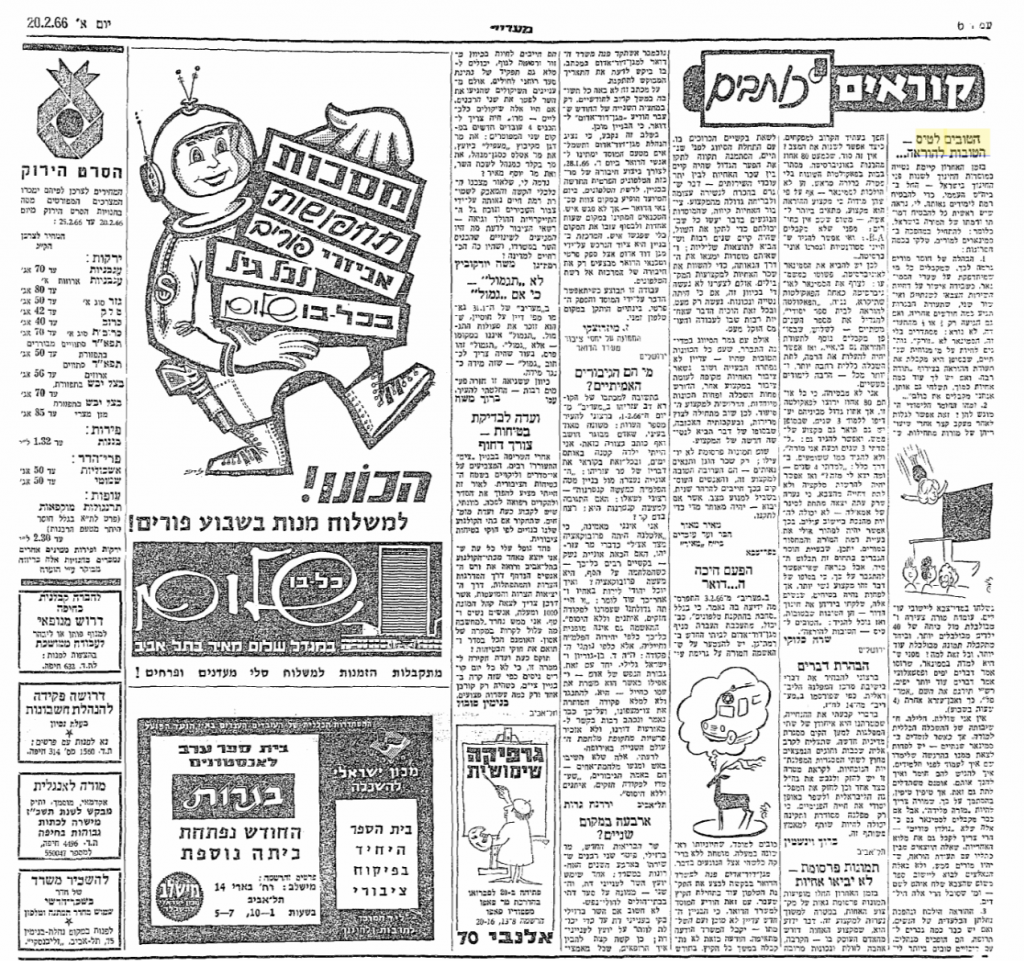
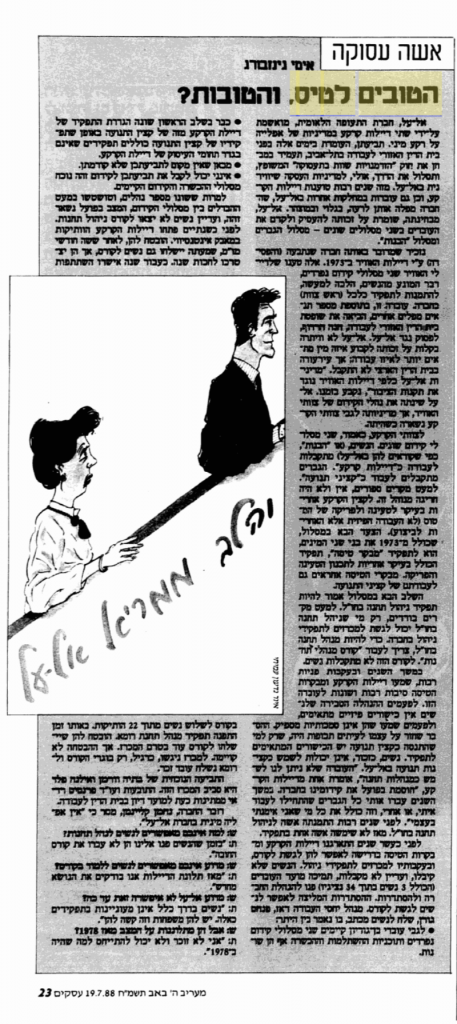
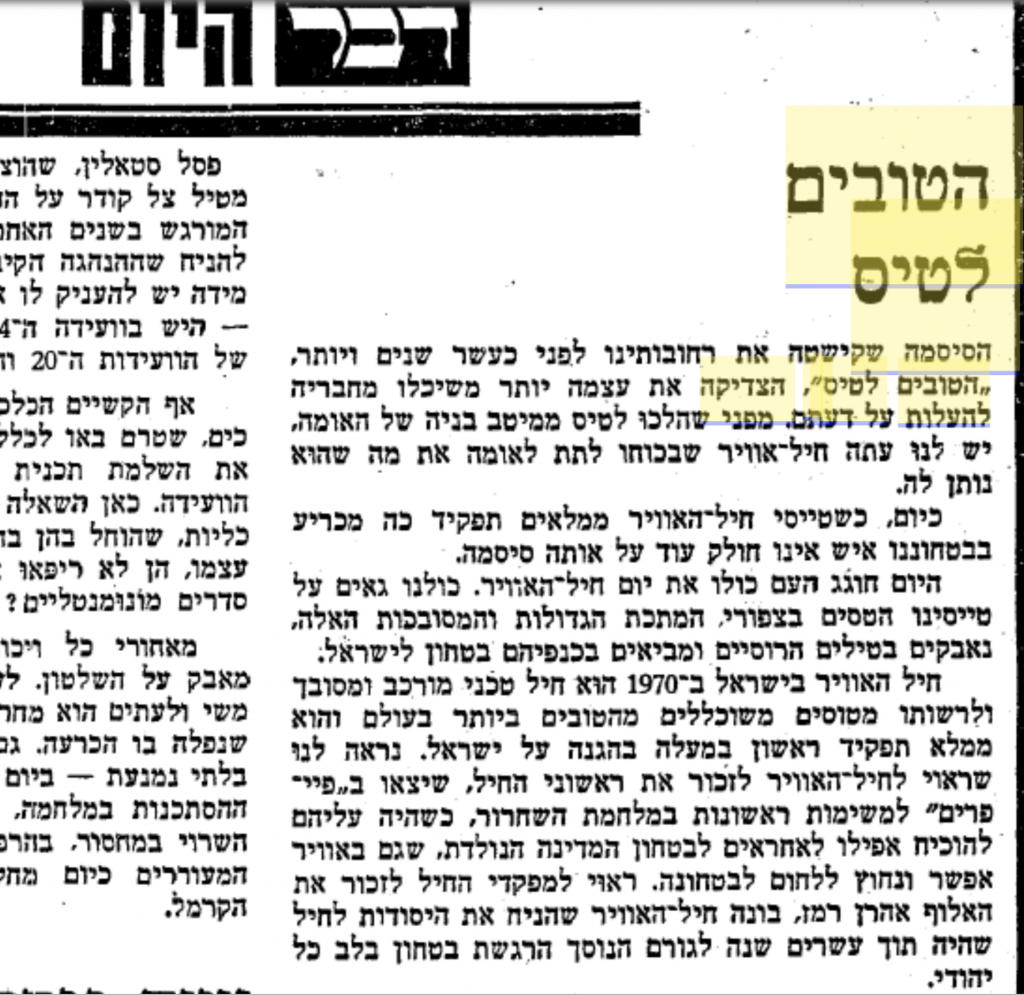
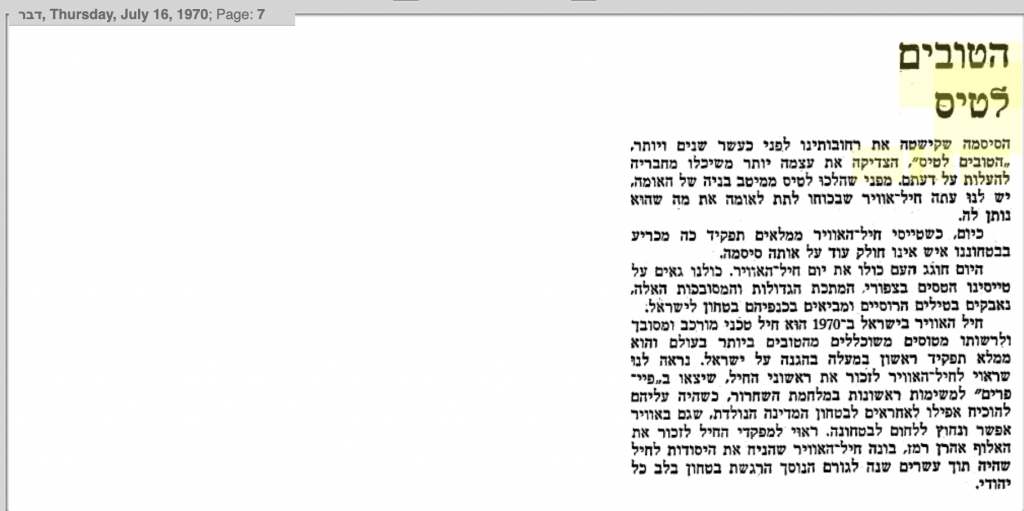
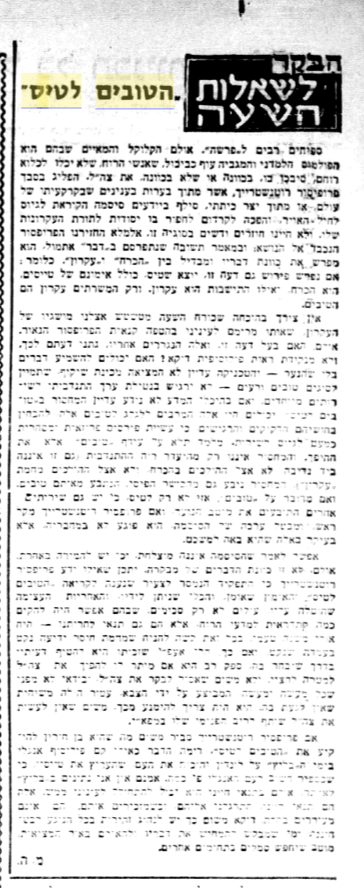
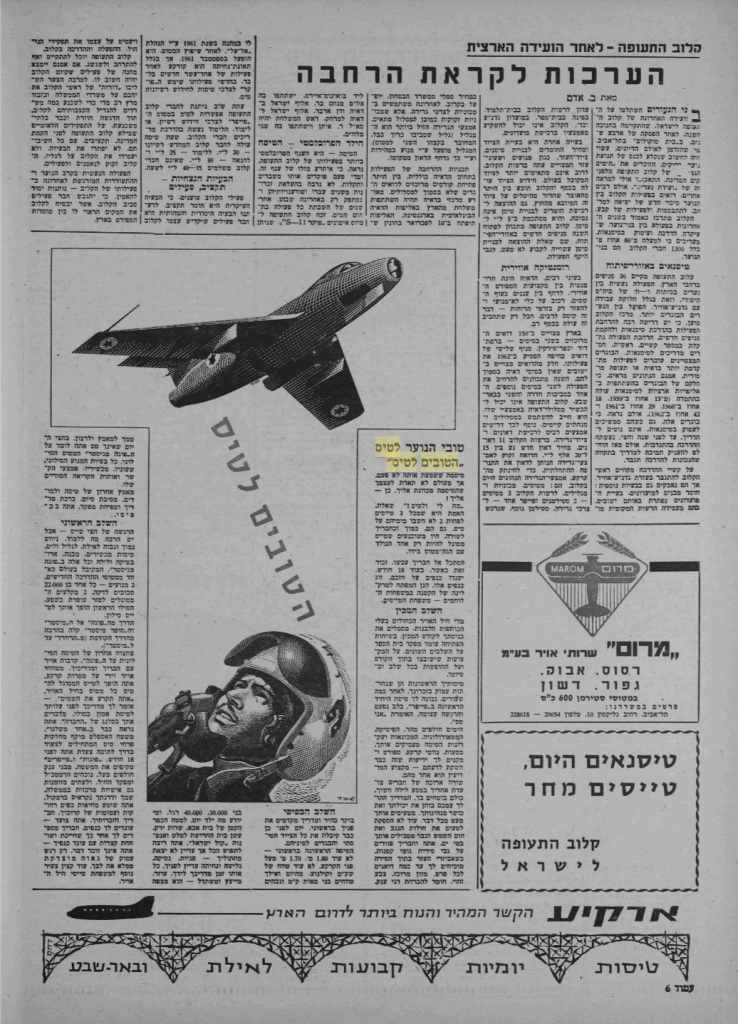
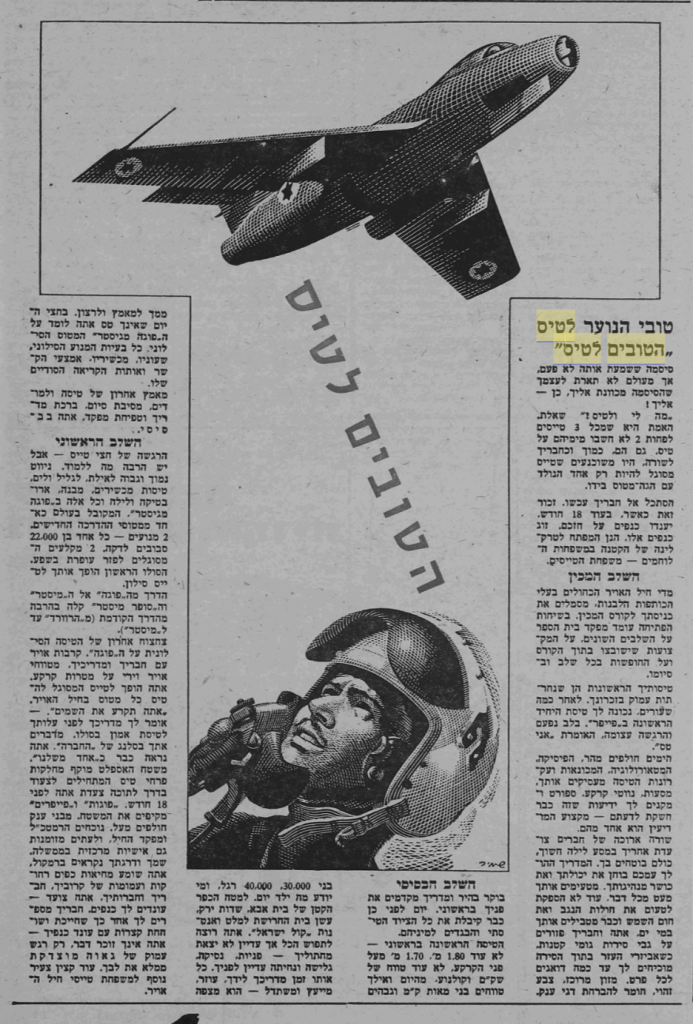
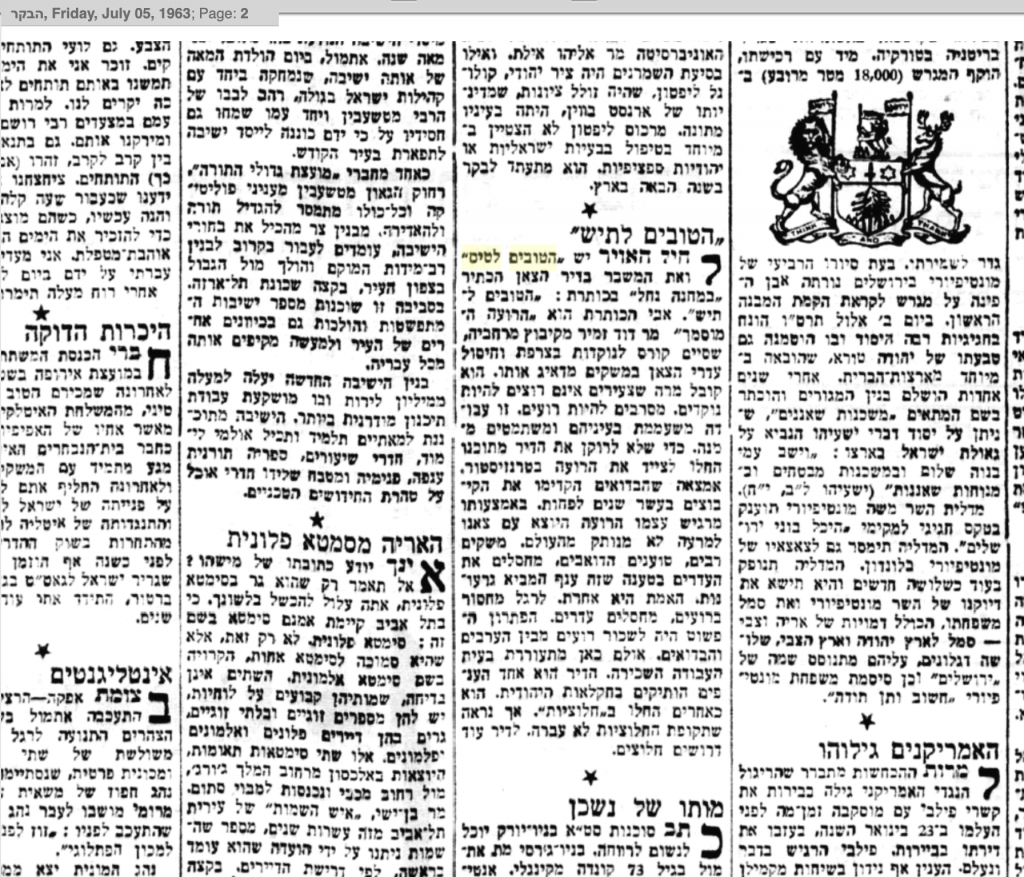



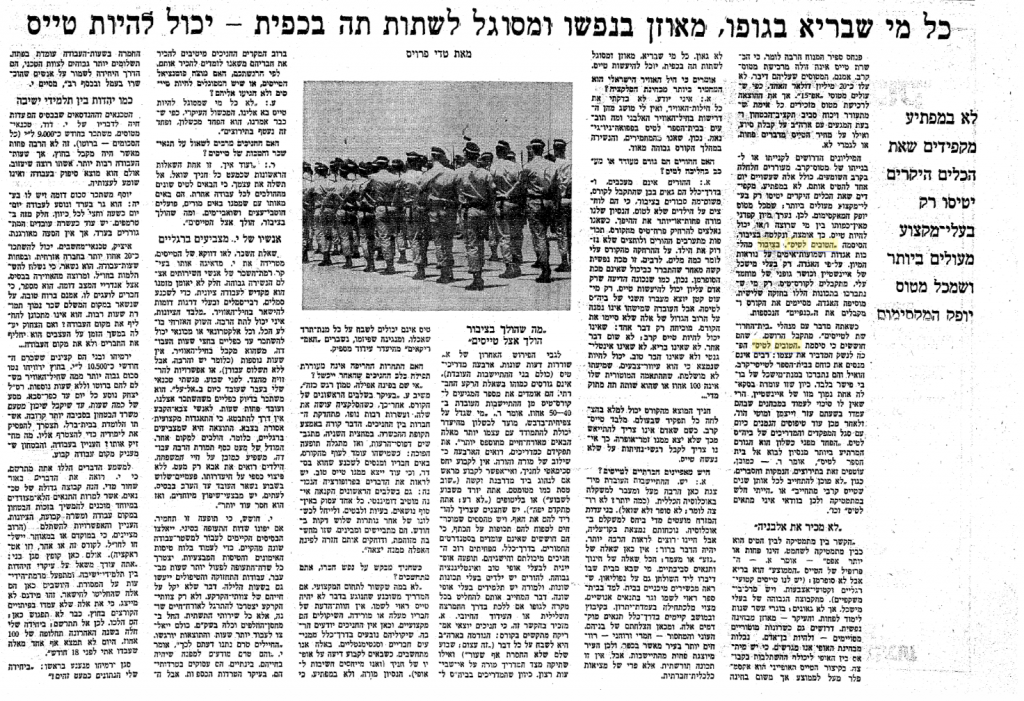
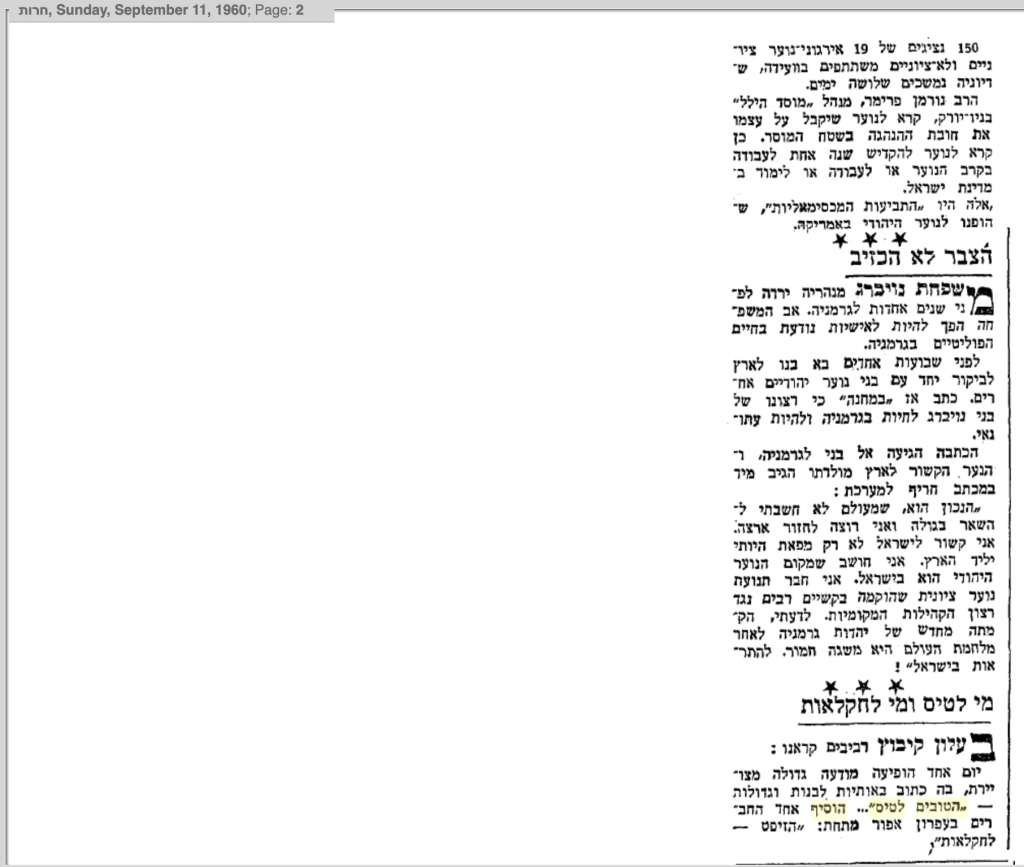
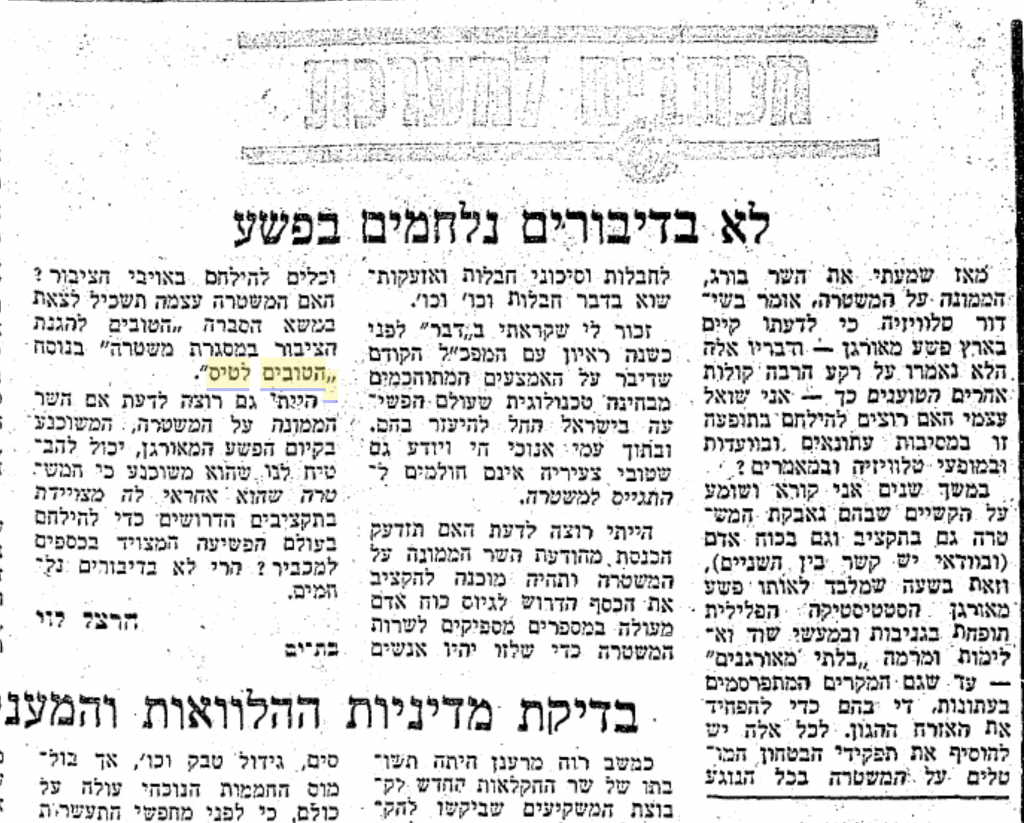
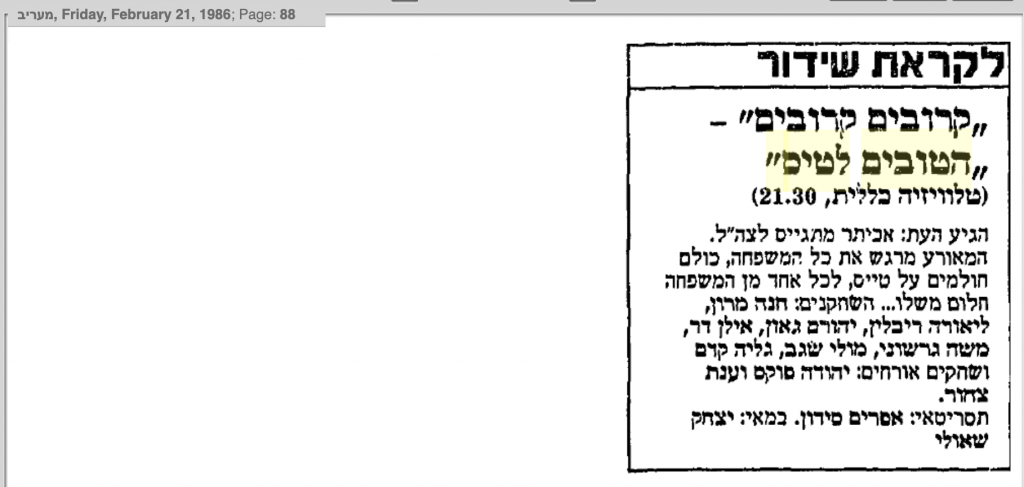
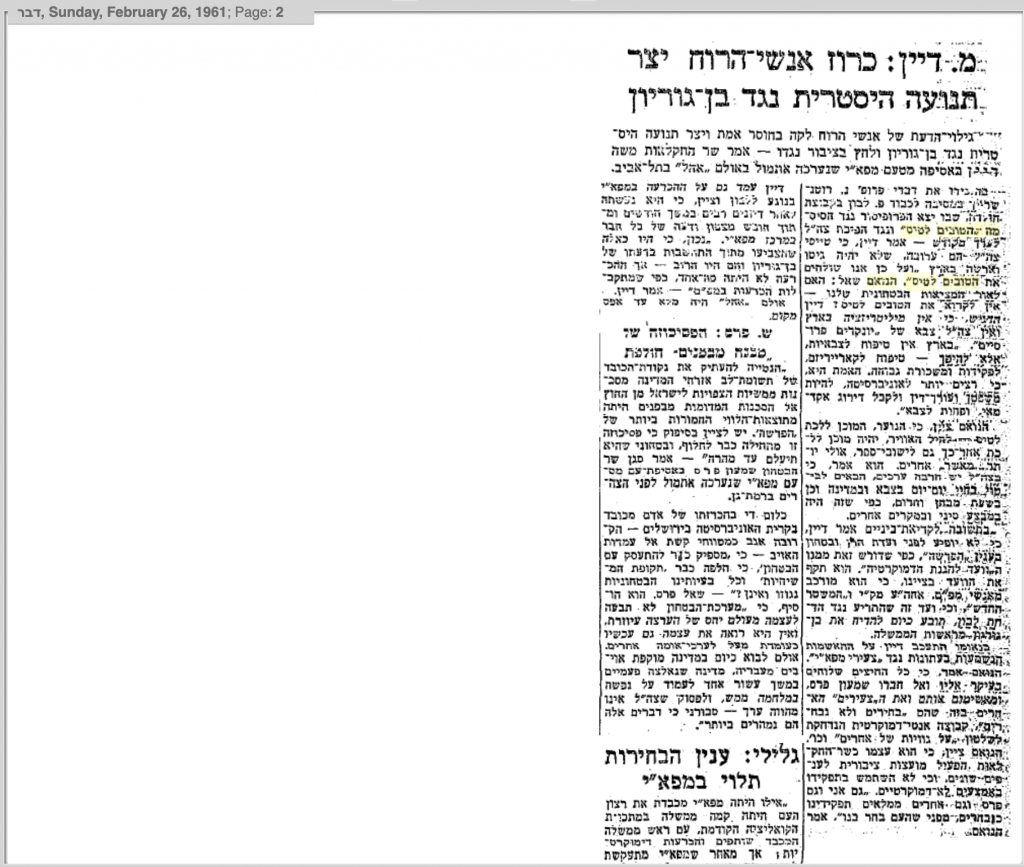
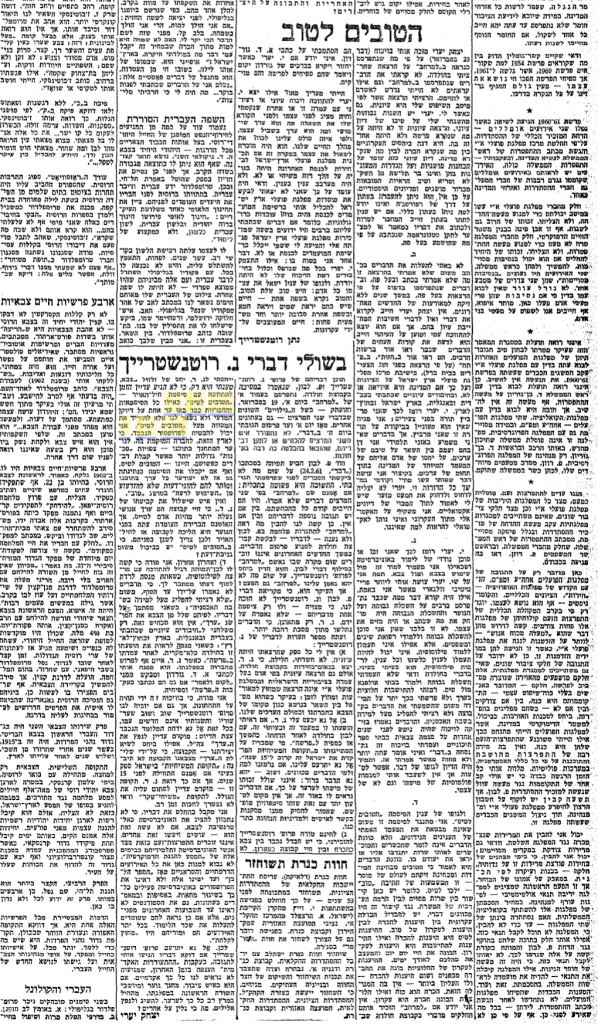
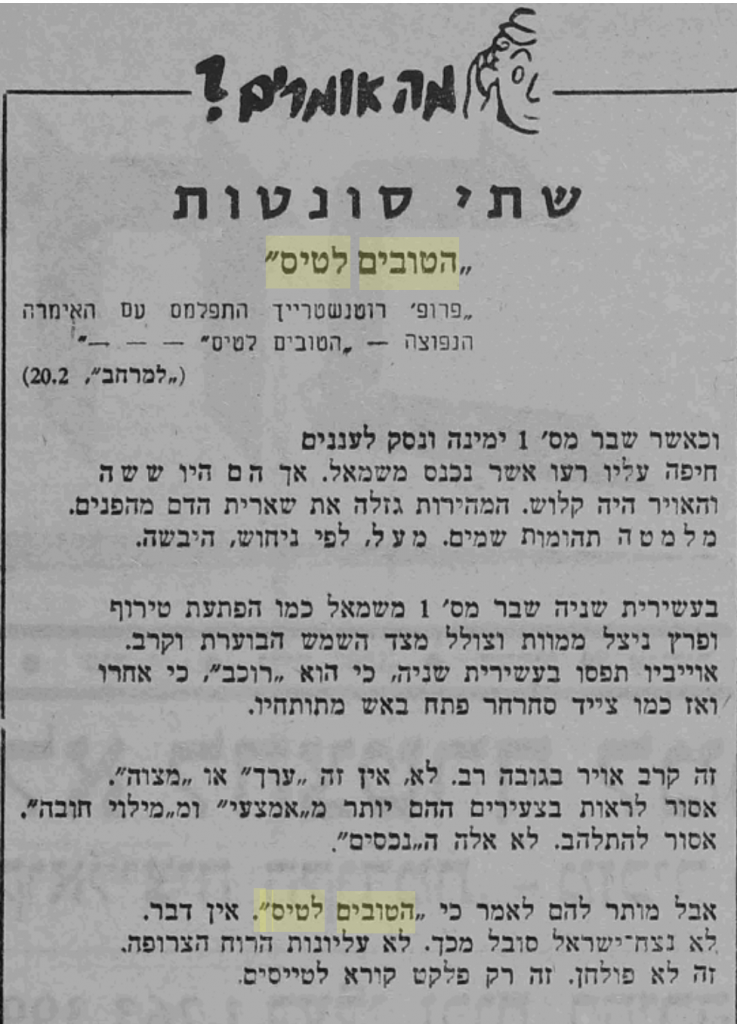
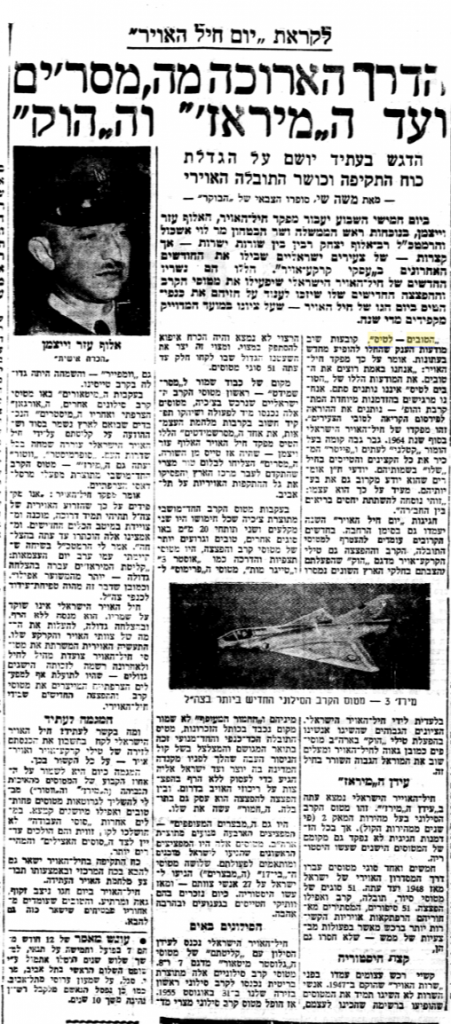


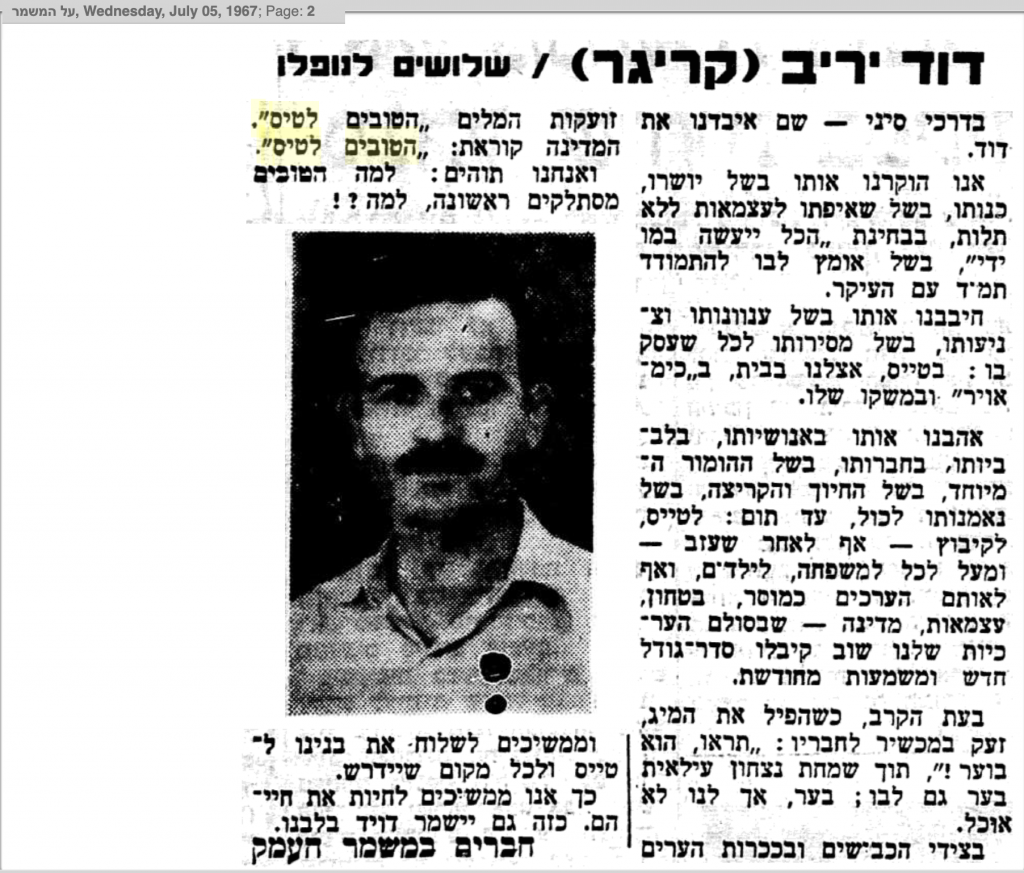


Pommy's original handwriting, February 2010, The Slogan Hatovim Latays is 50 by Moshe "Pommy" Hadar
Image Sources: Moshe "Pommy" Hadar's Archive
